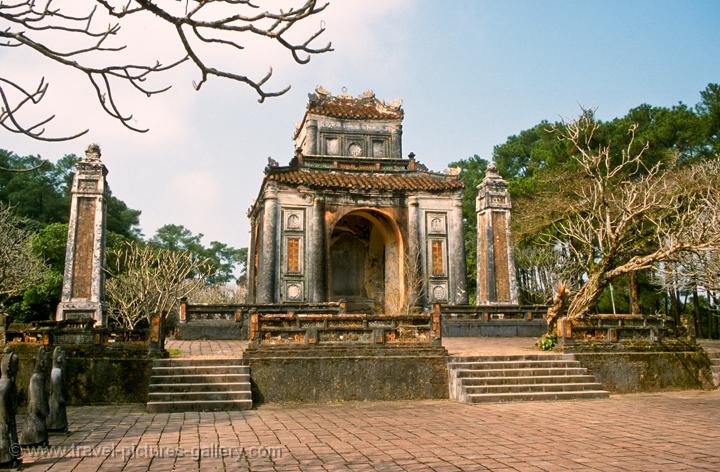Tu Duc Tomb in Hue in Vietnam is one of the wonderful places to visit in Vietnam. Tu Duc Tomb is also the great places to visit in Hue City. Tu Duc Tomb in Hue in Vietnam is located in a beautiful valley which offers fantastic landscapes and Tu Duc Tomb is the most brilliant tombs of Nguyen Emperors in Hue City – Vietnam.
This tomb, constructed between 1864 and 1867, is the most popular, and certainly one of the most impressive of the royal mausoleums. Emperor Tu Duc designed it himself, for use both before and after his death. The enormous expense of the tomb and the forced labour used in its construction spawned a coup plot that was discovered and suppressed.
Tu Duc was also very much a tyrant and anyone who rebelled against him was usually savagely dealt with. Everyone involved in his burial were subsequently executed in order to keep his final resting place safe from desecration and robbery i.e. the mausoleum is not where he is actually buried – this remains a mystery. The Ticket Office is at the South Gate (Vu Khiem) and opposite the lake steps lead through Khiem Cung gate and into the main temple enclosure – Hoa Khiem. Beyond this is the second temple Luong Khiem which was used as the Royal Residence. To the side of the Royal Residence is the tomb complex which contains a Salutation Court, Stele House and the Stele.
The mausoleum was built during Tu Doc’s lifetime and he spent many years there with his wives and concubines – it is said that he spent most of his time hidden away here writing poetry as he had smallpox which left him scarred. Of course he was also quite busy with his 104 wives and many concubines which perhaps left him little time for much else – although he did not have any children.
Tu Duc lived a life of imperial luxury and carnal excess (he had 104 wives and countless concubines), though no offspring.
From the entrance a path leads to the shore of Luu Khiem Lake . The tiny island to the right, Tinh Khiem , is where Tu Duc used to hunt small game. Across the water to the left is Xung Khiem Pavilion , where he would sit with his concubines, composing or reciting poetry.
Hoa Khiem Temple is where Tu Duc and his wife, Empress Hoang Le Thien Anh, were worshipped – today it just houses a jumble of dusty, unlabelled royal artefacts. The larger throne was for the empress; Tu Duc was only 153cm tall.
Minh Khiem Chamber , to the right behind Hoa Khiem Temple, was originally meant to be a theatre. Cheesy dress-up photo ops and cultural performances are available here today. Directly behind Hoa Khiem Temple is the quieter Luong Khiem Temple dedicated to Tu Duc’s mother, Tu Du.
Just around the lakeshore is the Honour Courtyard . You pass between a guard of elephants, horses and diminutive mandarins (they were even shorter than the emperor) before reaching the Stele Pavilion , which shelters a 20-tonne stone tablet. Tu Duc drafted the inscriptions himself. He freely admitted that he had made mistakes and chose to name his tomb Khiem (‘modest’).
The tomb , enclosed by a wall, is on the far side of a tiny lagoon. It’s a drab grey monument and the emperor was never interred here – the site where his remains were buried (along with great treasure) is not known. To keep it a secret from grave robbers, all of the 200 servants who buried the king were beheaded.
Tu Duc’s tomb is about 5km south of Hue on Van Nien Hill in Duong Xuan Thuong village.



